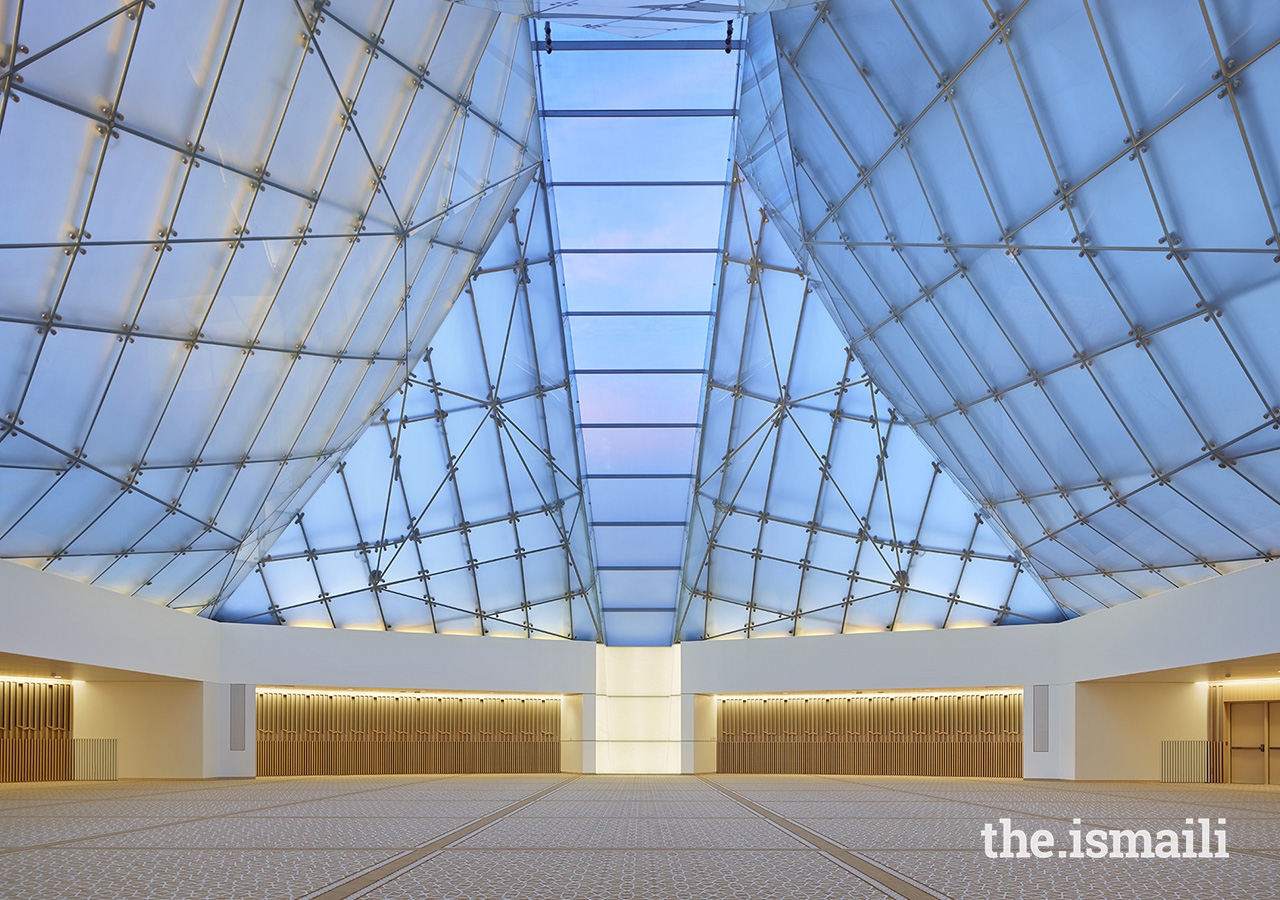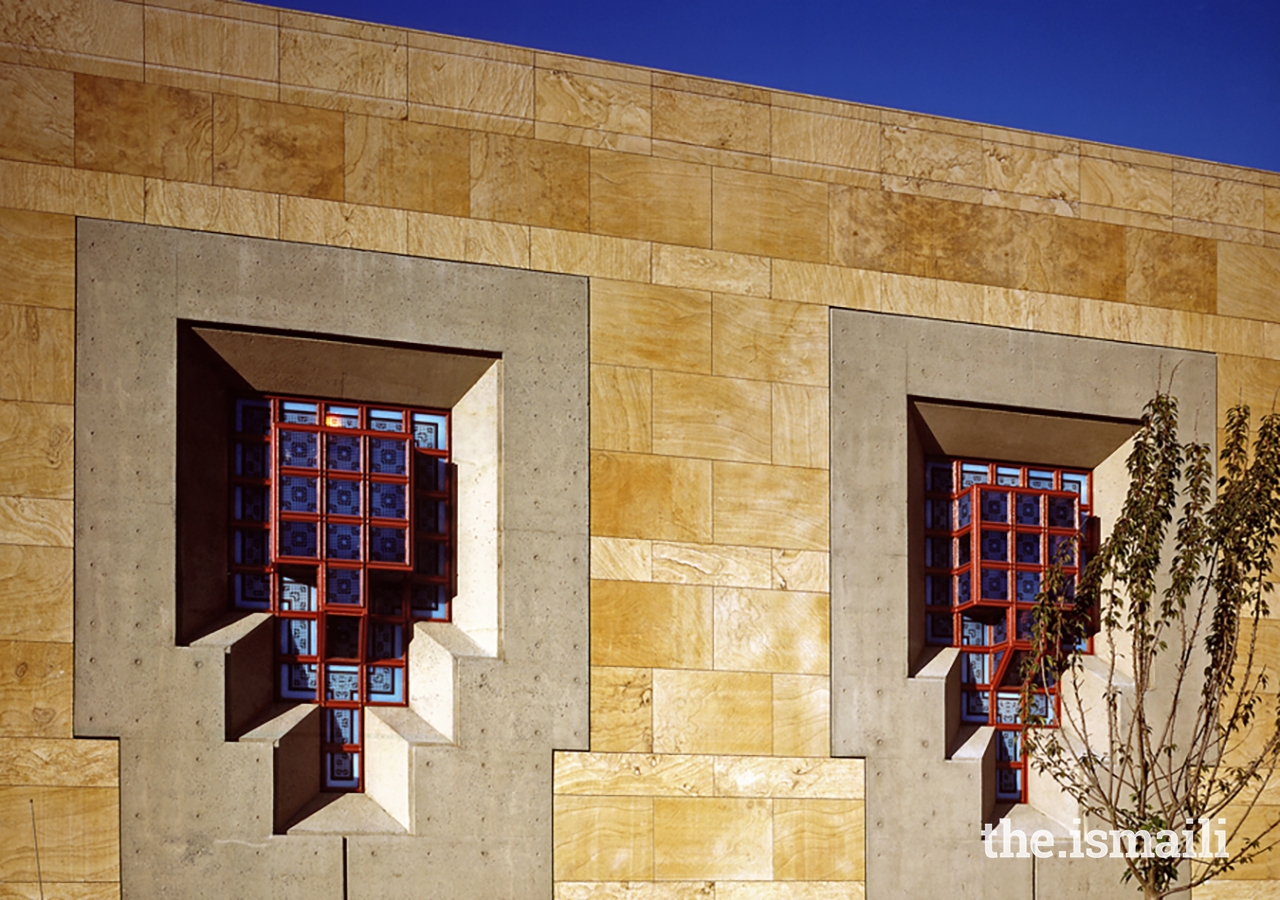In his remarks at the Foundation Ceremony of the Ismaili Centre Dubai in 2003, Mawlana Hazar Imam defined the purpose and the unique characteristics of an Ismaili Centre as:
“At a time when the search for mutual understanding remains essential to assuring peace and stability, the creation of spaces that will enable that search becomes a greater imperative than ever. It is my humble prayer that, when built, the Ismaili Centre in Dubai will be a place for contemplation and search for enlightenment, where people come together to share knowledge and wisdom. It will be a place of peace, of order, of hope and of brotherhood, radiating those thoughts, attitudes and sentiments which unite, and which do not divide, and which uplift the mind and the spirit.”
Ismaili Centres therefore serve as a bridge between our community’s heritage and our aspirations for the future, a statement of where we have come from and of our permanent home in the places we now reside.
In 1979, the foundation stone was laid for the first Ismaili Centre, in the South Kensington area of London. The completed high-profile building was officially opened by then prime minister Margaret Thatcher and Mawlana Hazar Imam in April 1985 — a historic event which marked a new phase of the Ismaili community’s presence in Europe. Several months later, in August, Canadian Prime Minister Brian Mulroney joined Mawlana Hazar Imam to open the second Ismaili Centre in Burnaby, British Columbia, an area where Ismailis had first settled in the country more than a decade earlier.
Each Ismaili Centre contains a space for prayer — a space we refer to as the Jamatkhana. The word Jamatkhana is a combination of two words; Jamat, meaning community or gathering; and Khana, meaning house or place. Jamatkhana therefore is a place where the community comes together for a variety of purposes, often including congregational prayer, expressions of piety, and personal search.
The third Ismaili Centre was opened in Lisbon in 1998. The Muslim heritage of Portugal made it appropriate for the Centro Ismaili to draw inspiration from many influences, including the distant but familiar heritage of Moorish architectural forms in the Iberian peninsula. In particular, the interplay and combination of outdoor and indoor spaces give the building a unique aesthetic feel, reflecting the local context as well as aspects of Islam's architectural heritage.
In ensuring that the buildings are aesthetically pleasing, inside and out, Ismaili Centres remind the world that beauty is significant. Often incorporating courtyards and gardens with flowing water, the Ismaili Centres instil a sense of peace and serenity in visitors. The elegant appeal of these elements is one way in which the Jamat gives back to the communities in which we live, and is also a reflection of the Islamic tradition which gives beauty its own intrinsic value.
The Ismaili Centre, Dubai was opened in March 2008 during Mawlana Hazar Imam's Golden Jubilee, which commemorated 50 years since his accession as the 49th hereditary Imam of the Shia Ismaili Muslims. The Centre is comparable in scope and architectural standing to its predecessors in London, Burnaby, and Lisbon. Built on land donated by the Ruler of Dubai, His Highness Sheikh Mohammad bin Rashid Al-Maktoum, the Ismaili Centre unites in its construction and décor the experiences and aesthetics of the past with the materials of the present, in order to meet the needs and objectives of the future.
The Foundation Ceremony for the first Ismaili Centre in Central Asia was held in August 2003 in Tajikistan, after which the Ismaili Centre Dushanbe was opened by President Emamoli Rahmon in October 2009.
The Ismaili Centres open their doors beyond the Jamat, and welcome diverse communities among whom Ismailis live. As demonstrated through exceptional architecture, the Centres act as representational buildings, symbolising the aspirations of the Jamat and Ismaili Imamat, while marking the community’s integration into the societies in which they live.
In May 2010, Prime Minister Stephen Harper laid the foundation stone for the Ismaili Centre in Toronto, Canada. Although each of the Ismaili Centres have incorporated green spaces and gardens, this was the first Centre to be built within a park which also incorporates the Aga Khan Museum. The Centre and Museum opened in September 2014.
These buildings, unique in architectural form yet forged in a common spirit, embody the hopeful aspirations of a forward-looking community. As Mawlana Hazar Imam said at the opening ceremony of the Ismaili Centre in Toronto, “These are places where Ismailis and non-Ismailis, Muslims and non-Muslims, will gather for shared activities — seminars and lectures, recitals and receptions, exhibitions and social events. These meeting halls and lounges, work offices and conference rooms will serve the organisational needs of the Ismaili community. But they will also, we trust, be filled with the sounds of enrichment, dialogue and warm human rapport, as Ismailis and non-Ismailis share their lives in a healthy gregarious spirit!”
---
During the month of February, The.Ismaili will explore the theme of Jamatkhanas and Ismaili Centres by exploring the role they play in the lives of the community, and the ways in which they contribute to the quality of life of members of the Jamat and those amongst whom we live.













